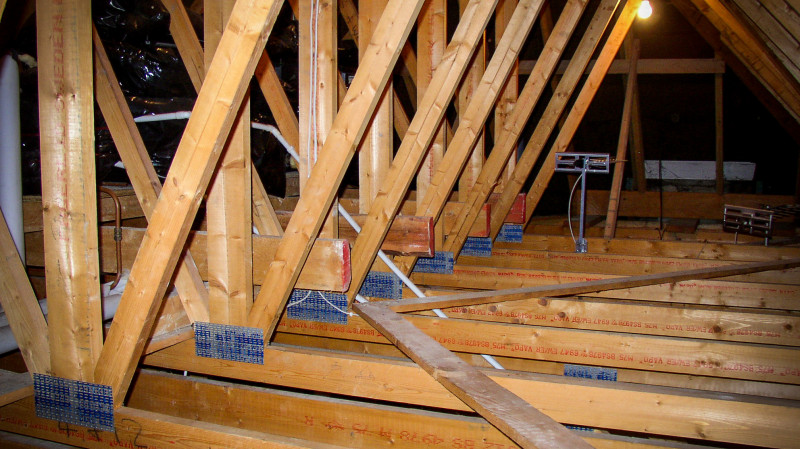You are here: Loft conversions for family living
Lofts are the neglected spaces of a family home. A dumping ground for Christmas decorations, clothes that no longer fit and half-finished projects you’ll come back to ‘one day’, what should be full of potential is more often full of clutter.
Yet, if you find yourself running out of space, a conversion could be the answer. Decluttering your eves to reveal a useful additional floor is usually easier than moving. Here’s what you need to consider.

Is it really cheaper than moving?
With surveys, valuations and conveyancing, stamp duty in England and Northern Ireland, and Land Transaction Tax in Scotland and Wales – not to mention estate agents’ commission, hiring a van and the time taken to find the right mortgage – moving to a new house is a costly business. It can easily top £12,000 for an average property. That’s money you won’t ever recover and, while it might not offset the full cost of a conversion, at least investing it in your own home means you will see the benefit as soon as the work is complete.
Extending rather than moving is a far cheaper option – and extending upwards, rather than outwards cuts costs still further, as you neatly avoid the need to sink footings and, in many cases, to even lay bricks. A shallow roof pitch may require a dormer window or two but, if you have adequate headroom already, a Velux window may suffice.
Real Homes magazine estimates the price of a ‘basic’ conversion with a skylight at around £15,000. If you want a dormer, which will provide additional standing space, expect to pay from £20,000.
Do I need to get planning permission?
The answer to this question depends on the kind of conversion you want to perform, as well as the property you live in. If your house is a listed building, the answer is yes, and the same is true if the extension will increase the ridge height or you live within designated land, like a green belt or national park.
However, a loft conversion won’t consume more than half of the land around the building, shouldn’t extend closer to the public highway than the house already does, is unlikely to protrude beyond the rear wall by more than three metres (unless you employ stilts or an impressive cantilever) and, as most of your changes will be affected internally, you won’t be changing the balance of materials used on the exterior of your home. As a loft conversion is considered ‘permitted development’ in many areas, you will often not need to make an application for planning permission but, if you do, each of these points should stand in your favour. The government’s official line on requirements for planning permission is published online, along with its technical guidance on permitted development rights for householders.
If you live in a terraced or semi-detached property, the Party Wall Act 1996 requires that you give your neighbour a minimum of two months’ notice before you start work. The Act gives you the right to perform the conversion, but it also gives your neighbour the option to refer the matter to the courts if you proceed without giving them notice, or the work is causing disturbance.
In any instance, consulting your local authority planning officer prior to having plans drawn is advisable, and you need to make sure you are compliant with building regulations, so that should any questions be asked when you come to sell the property you can present the requested paperwork.
What are the safety considerations?
Cutting through structural features, like joists and tresses, should be done with care, and only once substitute supports are in place. Claiming on your insurance for damage caused by shoddy work, inadequate planning or incompetence may be time consuming and difficult and could affect ongoing premiums or your ability to obtain insurance going forward. Leaving your house uninsured isn’t an option, either – particularly not if it is mortgaged, a requirement of which is usually that the building be fully insured, at least to the value of its reconstruction.
Where homeowners and inhabitants are concerned, section K of the current building regulations stipulates safety requirements for fixed ladders and staircases, which are required to access the converted loft, minimum vertical clearance on the staircase (2m in most cases, but this can be reduced to 1.8m on one side of the stairs leading to a loft conversion) and required headroom for safely moving around within the new room.
Will I make my money back?
A loft conversion can add 21% to the value of a property – and close to 25% in London – according to figures from Nationwide. With the average UK house price tipping over the £233,000 mark, that would represent an uplift of almost £50,000. On a £500,000 property, you could double that, so in either case it is likely to cover any costs.
When added to the savings made by not moving, it is easy to see that a loft conversion pays off. In the short term, your family gets the room it needs to grow without waving goodbye to friends and neighbours. And, in the longer term, the added value will be realised when it is time to move on or downsize.
If you are looking to make some home improvements, you may find some of these services useful
Building Regulations
Find details of local experts who can help with Building Regulations
Architectural Design Services
Find local Architectural Design experts
Builders
Find local help with a building project
Structural Inspections
Find an expert to carry out a structural inspection
Building Surveys
I want a local surveyor to do a Building Survey for me

